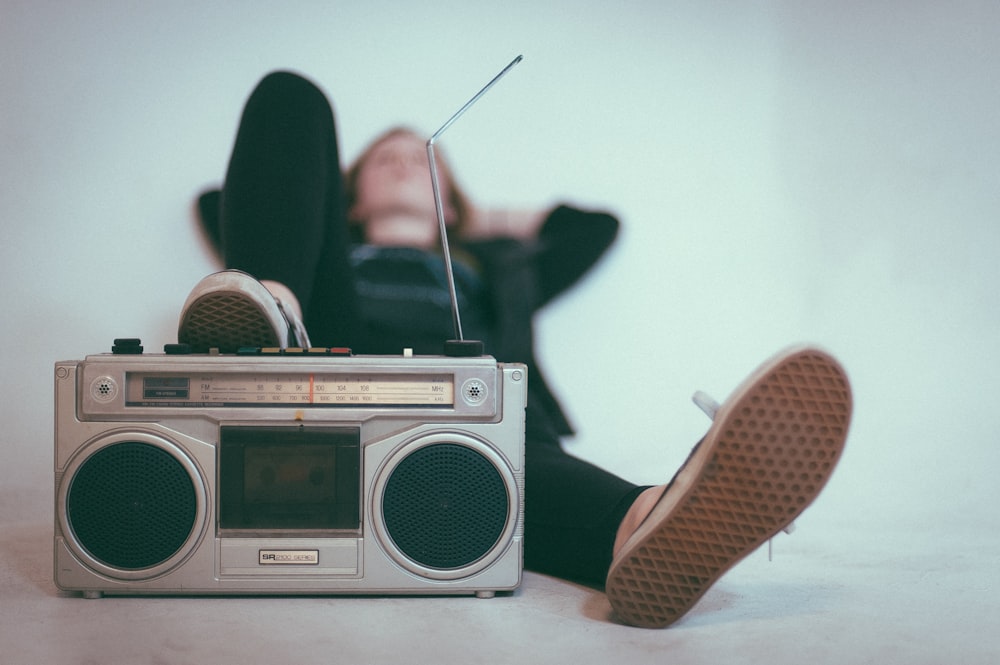目次
運動中ってどんな音楽を聴くと良いの?
運動をするときに音楽を聴く方って多いと思います.
理学療法士・作業療法士であれば運動を行うときにどういった音楽を聴けばいいのかをクライアントに聞かれたことってないですか?
実際のところ運動をする際にはどんな音楽を聴くのが良いのでしょうか?
今回は運動をする際にどんな音楽を聴くのが良いのかを考えるうえで参考になる論文をご紹介させていただきます.

今回ご紹介する論文
J Strength Cond Res. 2020 Mar;34(3):617-622. doi: 10.1519/JSC.0000000000003417.
Listening to Fast-Tempo Music Delays the Onset of Neuromuscular Fatigue
Jacob Centala 1 2, Cameron Pogorel 1 2, Scott W Pummill 1 2, Moh H Malek 1 2
Affiliations expand
PMID: 31860533 DOI: 10.1519/JSC.0000000000003417
今回ご紹介する論文は2020年に掲載された論文です.
研究の目的
Studies determining the effect of music on physical performance have primarily focused on outcomes such as running time to exhaustion, blood lactate, or maximal oxygen uptake. The electromyographic fatigue threshold (EMGFT) is determined through a single incremental test and operationally defined as the highest exercise intensity that can be sustained indefinitely without an increase in EMG activity of the working muscle. To date, no studies have examined the role of fast-tempo music on EMGFT. The purpose of this investigation, therefore, was to determine whether fast-tempo music attenuates neuromuscular fatigue as measured by the EMGFT. We hypothesized that listening to fast-tempo music during exercise would increase the estimated EMGFT compared with the control condition. Secondarily, we hypothesized that maximal power output would also increase as a result of listening to fast-tempo music during the exercise workbout.
身体的パフォーマンスに対する音楽の効果を決定する研究は,主に疲労困憊までのランニング時間,血中乳酸値,または最大酸素摂取量などのアウトカムに焦点が当てられています.
筋電図疲労閾値(EMGFT)は1回のインクリメンタルテストによって決定され,動作筋の筋電図活動の上昇なしに無期限に持続できる最高の運動強度と運用上定義されております.
これまで速いテンポの音楽が筋電図疲労閾値に及ぼす影響について検討した研究はありません.
この研究では筋電図疲労閾値で測定される神経筋疲労を速いテンポの音楽が減衰させるかどうかを明らかにすることを目的としております.
この研究では運動中に速いテンポの音楽を聴くことで対照条件と比較して推定筋電図疲労閾値が増加するといった仮説を立てております.
また運動中に速いテンポの音楽を聴くことによって最大出力も増加するという仮説を立てております.
研究の方法
Ten healthy college-aged men (mean ± SEM: age, 25.3 ± 0.8 years [range from 22 to 31 years]; body mass, 78.3 ± 1.8 kg; height: 1.77 ± 0.02 m) visited the laboratory on 2 occasions separated by 7 days. The EMGFT was determined from an incremental single-leg knee-extensor ergometer for each visit. In a randomized order, subjects either listened to music or no music for the 2 visits. All music was presented as instrumentals and randomized with a tempo ranging between 137 and 160 b·min.
健康な大学生男性10例(平均±SEM:年齢25.3±0.8歳[22~31歳の範囲]、体重78.3±1.8kg、身長1.77±0.02m)を7日間隔で2回来室させております.
筋電図疲労閾値は,各訪問時に片足膝伸展エルゴメーターから測定しております.
2回の訪問の間,被験者は音楽を聴くか聴かないかのランダムな順序で音楽を聴いております.
音楽はすべてインストゥルメンタルで,137~160b-minのテンポでランダムに演奏されております.
研究の結果
The results indicated that listening to fast-tempo music during exercise increased maximal power output (No Music: 48 ± 4; Music: 54 ± 3 W; p = 0.02) and EMGFT (No Music: 27 ± 3; Music: 34 ± 4 W; p = 0.008). There were, however, no significant mean differences between the 2 conditions (no music vs. music) for absolute and relative end-exercise heart rate as well as end-exercise rating of perceived exertion for the exercised leg.
運動中に速いテンポの音楽を聴くことで最大出力(音楽なし:48±4、音楽あり:54±3W、p=0.02)および筋電図疲労閾値(音楽なし:27±3、音楽あり:34±4W、p=0.008)が増加することが示されました.
しかし運動終了時の絶対心拍数,相対心拍数,運動終了時の運動強度評価については、,2つの条件(音楽なし対音楽)の間に有意な平均値の差は見られませんでした.
研究の結論
These findings suggest that listening to fast-tempo music increased overall exercise tolerance as well as the neuromuscular fatigue threshold. The results are applicable to both sport and rehabilitative settings.
この研究の結果から速いテンポの音楽を聴くことで,全体的な運動耐容能と神経筋の疲労閾値が向上することが示唆されます.
この結果はスポーツとリハビリの両方の環境に適用可能であります.
今回は運動をする際にどんな音楽を聴くのが良いのかを考えるうえで参考になる論文をご紹介させていただきました.
今回の結果から考えると運動のテンポを上げることが運動太陽脳と神経筋の疲労閾値を上げることにつながりそうですね.






